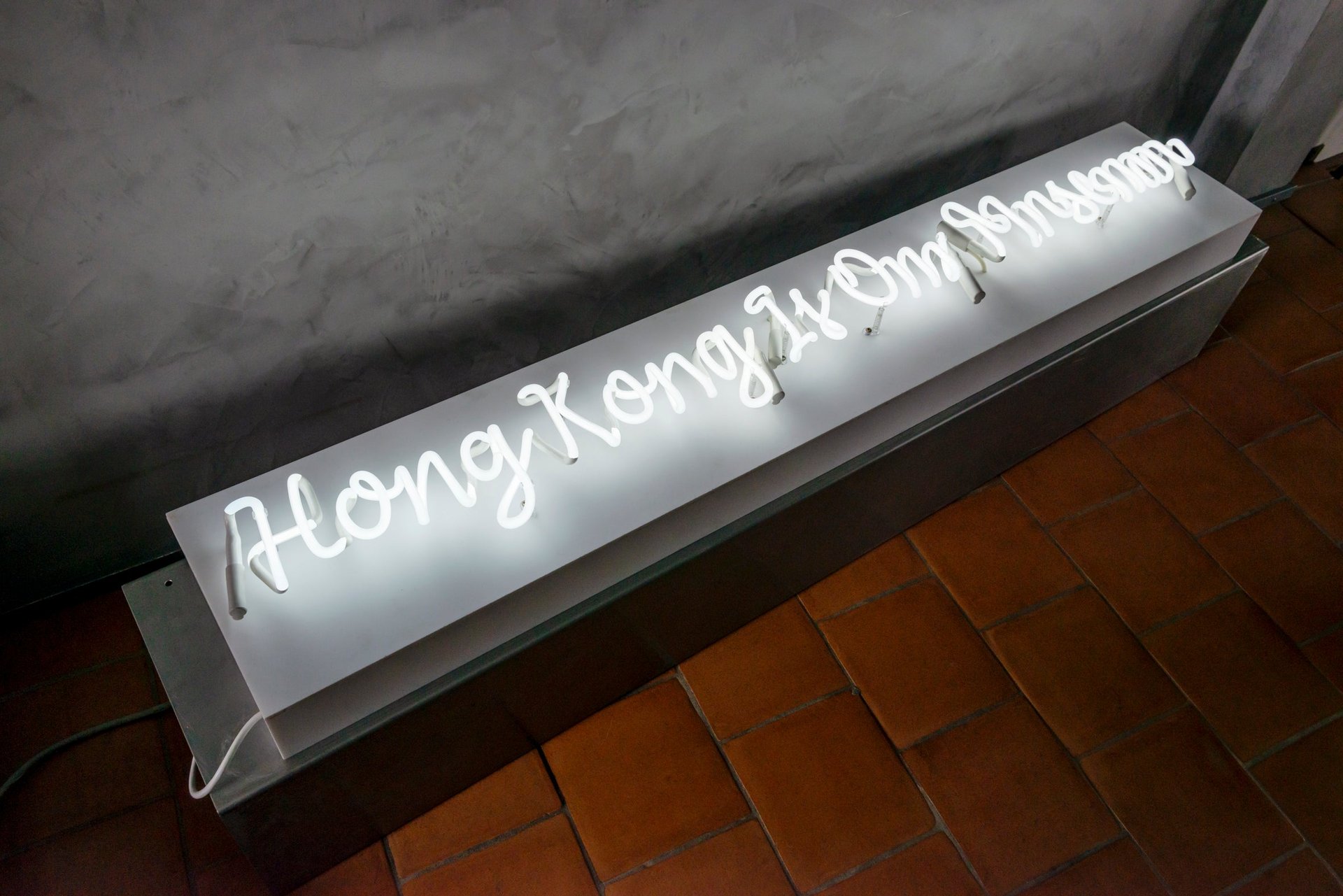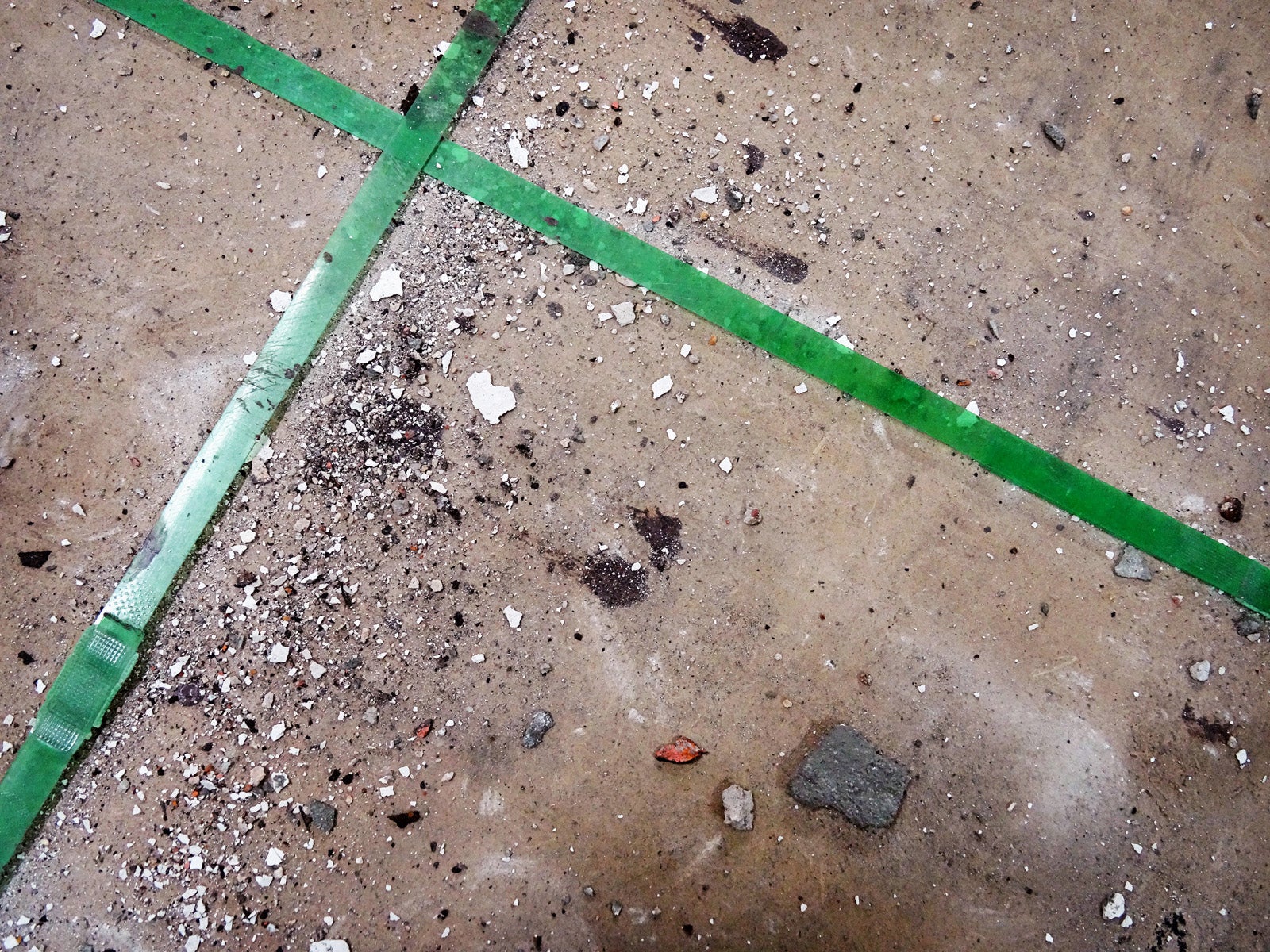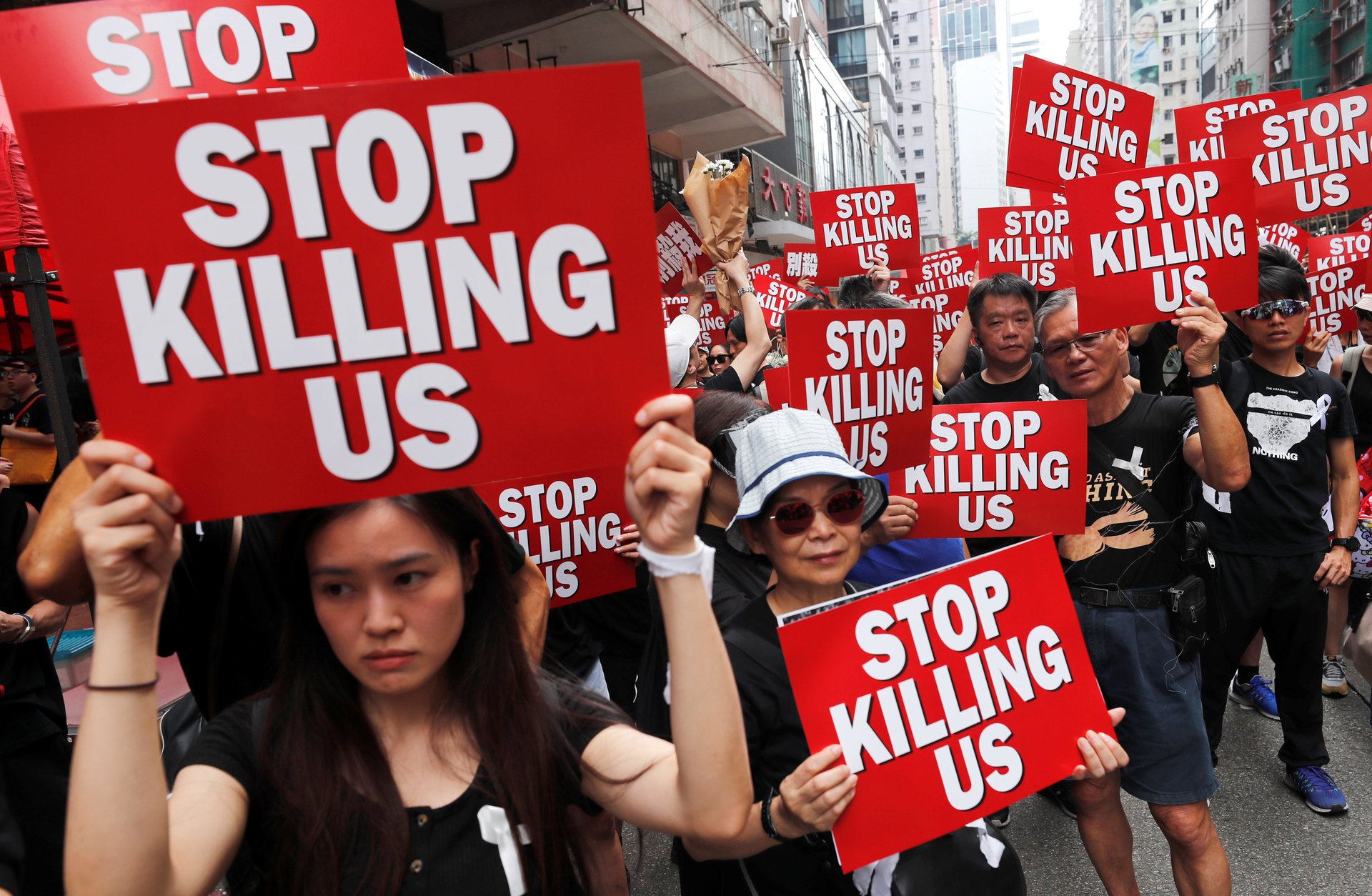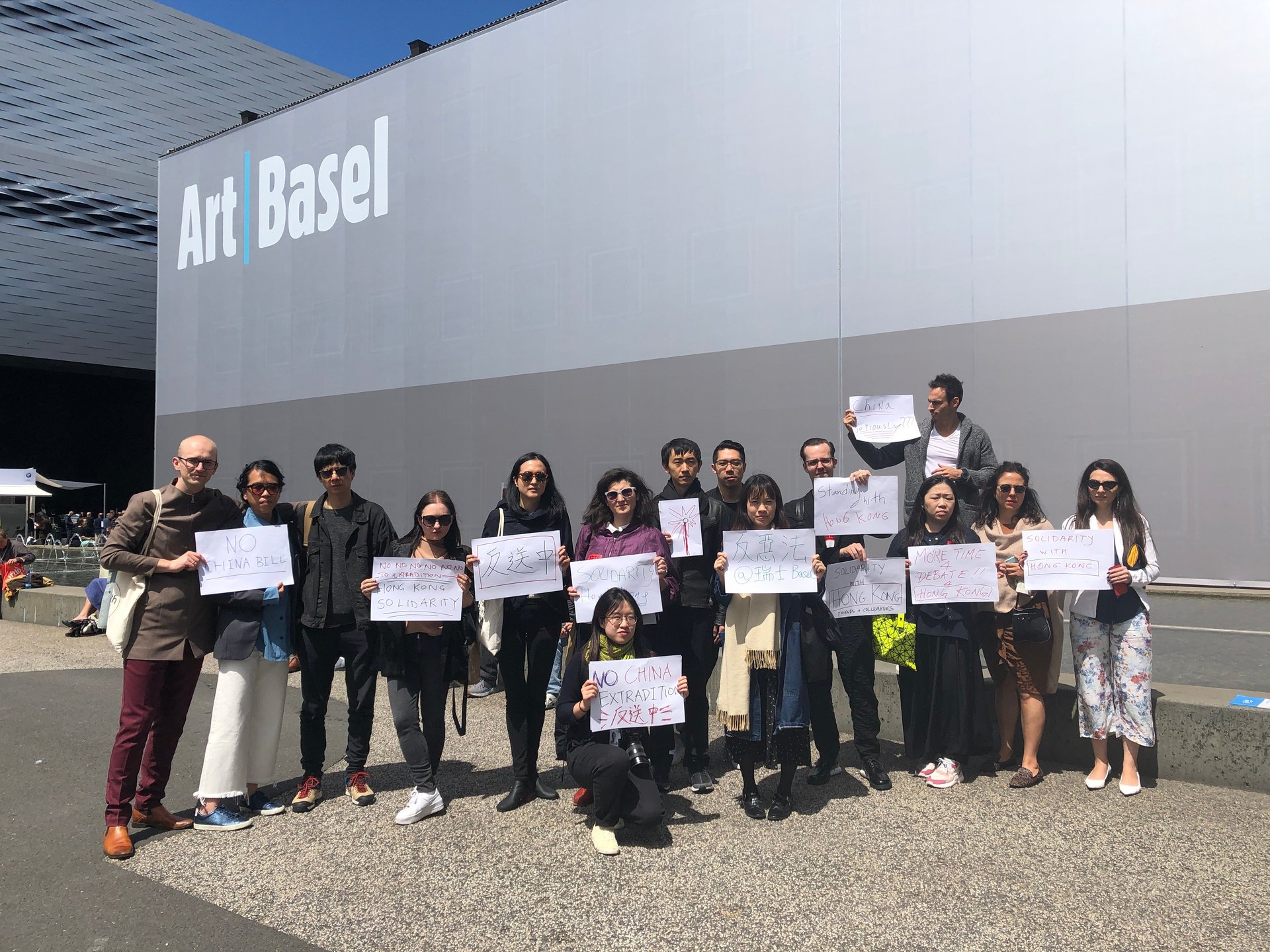An art show in Switzerland became an accidental lens into Hong Kong’s protests
An exhibition of Hong Kong art in Switzerland that coincided with the city’s biggest protests ever became, briefly, a cultural reference point for understanding Hong Kong’s political struggles.


An exhibition of Hong Kong art in Switzerland that coincided with the city’s biggest protests ever became, briefly, a cultural reference point for understanding Hong Kong’s political struggles.
The show, which took place during the Art Basel fair in the Swiss town of Basel earlier this month, is the first part of an on-going curatorial project entitled Homeland in Transit spearheaded by Hong Kong curator Angelika Li, who relocated to Switzerland two years ago.
“I’m often asked, ‘where are you from?’ in my new home in Switzerland. And this simple question triggers quite a lot of conversations and thoughts on the shifting nature of our cultural identity,” Li told Quartz. “I always see ourselves as orphans on our floating city that goes through waves of changes and transformations.”
Li said her initial intention was to prompt audience members from different parts of the world to contemplate their own roots and stories through 18 works about identity by eight Hong Kong artists. But the show just happened to open as her home city was about to witness its biggest protests ever—triggered by anger over a proposed law that would have allowed extradition to mainland China. At their heart, though, they were about Hong Kong’s present and future identity too.

The exhibition’s June 7 opening was scheduled to coincide with the opening of the week-long Art Basel in Basel. Two days later, on June 9, Hong Kong saw and estimated 1 million people take to the streets to protest the law, viewed as a dire threat to the autonomy and freedom the city has enjoyed since returning to Chinese sovereignty.
This was followed on June 12 by violent confrontations between the police and some of the tens of thousands of protesters who occupied the government district. The government announced on June 15 that it was indefinitely suspending the bill but protests have continued, including one on June 16 estimated at 2 million demonstrators, to seek the full withdrawal of the bill and an apology from the police.

During the week of unrest, Li joined some members of Hong Kong’s art circle to rally outside the Art Basel fair ground.

For the exhibition taking place in the heart of Basel’s Old Town, Li selected artworks that illustrated the troubles Hong Kong faces.
Two Green Tapes (2014) by Kitty Chou shows organized chaos along borders and boundaries, a reflection of the ongoing tension of the border between Hong Kong and mainland, as well as many places abroad.
Five works from Lee Ka-sing’s photographic series Z Fiction (2010-2011) form a narrative about Hong Kong’s constant search for the definition of its cultural identity, and a contemplation of its British past. The image below from the series depicts a man climbing up a ladder aiming to reach the sky—an ongoing process that never ends, the artist’s metaphor for Hong Kong people’s constant search not only for their identity, but also for their ideal version of Hong Kong.
Leung Chi-wo’s video work My Name is Victoria (2008) contains footage shot along Victoria Road all the way to Aberdeen, where the British troops first landed Hong Kong during the reign of Queen Victoria, accompanied by a voice over telling the stories of 40 women about why they were named Victoria.
Li said a lot of visitors to the exhibition, which ended last week, expressed their views on the extradition bill and human rights issues in China. The second part of the project, a book that will document the artworks featured as well as dialogues between the curator and the artists will be published next year. She added that there are plans to expand the project further to other parts of Switzerland with local partners.
“Many visitors are very engaged in the complexity and frustrations in the ever-shifting cultural identity of Hong Kongers,” she said. “Through the recent happenings in our city and with more than 2 million people marching down the streets to have their voices heard, it seems that the city is redefining a collective cultural identity.”